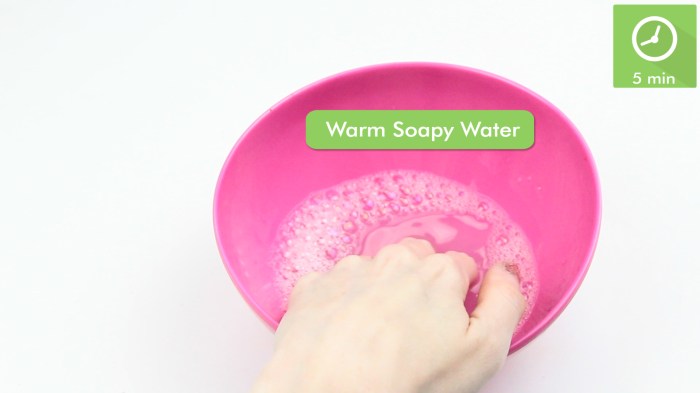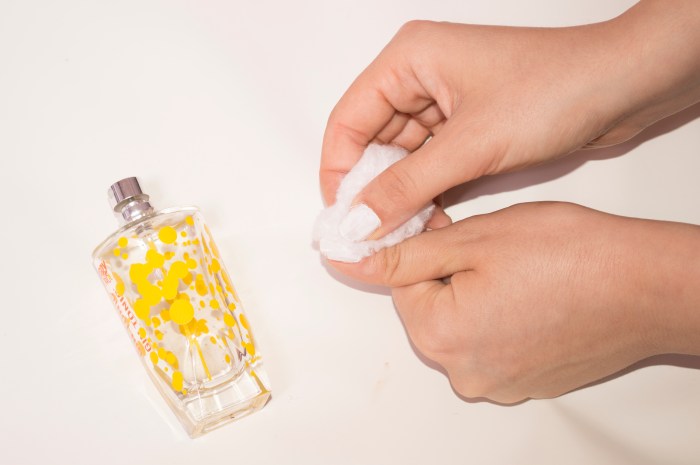How Do You Take Off Nail Polish?
Methods for Removing Nail Polish
How do you take off nail polish – Removing nail polish effectively and safely requires the right technique and products. Choosing the appropriate remover and application method can minimize damage to your nails and cuticles. This section details various methods for removing nail polish, highlighting their advantages and disadvantages.
Removing Nail Polish with Nail Polish Remover and Cotton Balls
The most common method involves using nail polish remover and cotton balls. Begin by applying a small amount of remover to a cotton ball. Gently swipe the cotton ball across the nail surface, moving from the cuticle to the tip in one smooth stroke. Avoid harsh scrubbing, which can damage your nails. Repeat as necessary until all polish is removed.
For stubborn polish, hold the cotton ball saturated with remover on the nail for a few seconds before swiping.
Using Acetone-Based Nail Polish Remover, How do you take off nail polish
Acetone-based removers are highly effective, particularly for long-lasting or stubborn nail polishes. However, acetone can be harsh on nails and dry out the surrounding skin. Always ensure adequate ventilation when using acetone-based removers, as the fumes can be irritating. Apply the remover as described above, but work quickly and avoid prolonged contact with the skin. Follow up with a good moisturizer.
Removing Nail Polish with Non-Acetone Remover
Non-acetone removers are gentler on nails and cuticles than acetone-based options. They are typically slower-acting but pose less risk of dryness or irritation. The application method is the same as with acetone-based removers, but you may need to repeat the process several times for complete removal. The slower action can be beneficial for fragile nails.
Comparison of Cotton Products for Nail Polish Removal
Different cotton products offer varying levels of effectiveness and cost-effectiveness in nail polish removal. The following table summarizes the key differences:
| Product Type | Effectiveness | Cost |
|---|---|---|
| Cotton Balls | Good; generally absorbent and soft | Low |
| Cotton Pads | Excellent; larger surface area for quicker removal | Medium |
| Cotton Rounds | Good; similar to cotton balls but often pre-cut | Medium |
Dealing with Difficult Nail Polish Removal
Certain types of nail polish, like glitter or gel polish, require more specialized techniques for removal. Improper removal can lead to nail damage. This section Artikels safe and effective methods for tackling challenging polish removal.
Removing Glitter Nail Polish

Source: wikihow.com
Glitter nail polish can be notoriously difficult to remove due to the embedded glitter particles. Soak a cotton pad generously with acetone-based remover and place it on the nail. Wrap a piece of aluminum foil tightly around each nail to hold the cotton pad in place. Let it sit for 10-15 minutes to allow the remover to soften the polish.
Gently peel off the foil and cotton pad, then use a cuticle pusher or orangewood stick to gently remove any remaining glitter. Avoid aggressive scraping, which can scratch the nail surface.
Removing Stubborn or Long-lasting Nail Polish

Source: wikihow.com
For stubborn nail polish, increase the soaking time with acetone-based remover. You can also try gently buffing the nail surface with a fine-grit buffer before applying remover. Avoid excessive buffing to prevent thinning or damage to the nails.
Removing Gel or Acrylic Nail Polish at Home
Removing gel or acrylic nails at home carries a risk of nail damage if not done correctly. It’s recommended to seek professional removal for best results. However, if you choose to do it at home, use a high-quality acetone-based remover and follow the manufacturer’s instructions carefully. Always protect the surrounding skin and use a cuticle pusher or orangewood stick to gently lift the polish from the nail bed.
Avoid pulling or forcing the polish off.
| Tool/Material | Description |
|---|---|
| Acetone-based nail polish remover | High-quality remover is essential for effective and safe removal. |
| Cotton pads | Larger surface area for better coverage. |
| Aluminum foil | To secure cotton pads on nails. |
| Cuticle pusher or orangewood stick | To gently remove loosened polish. |
Common Mistakes in Nail Polish Removal and How to Avoid Them
Common mistakes include using harsh scrubbing, applying excessive pressure, and prolonged contact with acetone. Always use gentle strokes, avoid excessive force, and minimize acetone exposure to protect nail health. Regular moisturizing is crucial to counteract the drying effects of acetone.
Nail Care After Polish Removal
After removing nail polish, it’s essential to nourish and hydrate your nails and cuticles. This section Artikels a simple nail care routine to promote nail health and strength.
Moisturizing Nails and Cuticles

Source: allure.com
Moisturizing is crucial after removing nail polish, as the process can dry out the nails and cuticles. Apply a rich hand cream or cuticle oil to hydrate and protect the nail bed.
Benefits and Application of Cuticle Oil
Cuticle oil softens and hydrates cuticles, preventing dryness and cracking. Apply a small amount of cuticle oil to each cuticle and gently massage it in. Repeat daily or as needed.
Simple Nail Care Routine After Polish Removal
A simple routine includes washing your hands gently, applying cuticle oil, and moisturizing your nails and cuticles with a rich cream. Avoid harsh soaps and excessive hand washing, as these can further dry out your nails.
Recommended Products for Nail Care After Polish Removal
- Cuticle oil: Provides deep hydration and nourishment to the cuticles, preventing dryness and breakage.
- Hand cream: Moisturizes the skin around the nails and helps prevent dryness.
- Nail strengthener: Helps to strengthen brittle or weak nails.
Alternative Nail Polish Removal Techniques
Beyond the traditional methods, several alternative techniques can be used for nail polish removal. This section explores some of these options and their respective environmental impact.
Using Foil and Cotton Pads for Efficient Nail Polish Removal
This method, detailed earlier for glitter polish, is effective for all types of polish. The foil helps to keep the remover on the nail, increasing its effectiveness and reducing the time needed for removal.
Homemade Nail Polish Remover
A simple homemade remover can be made by mixing equal parts acetone and olive oil. However, the effectiveness may be lower than commercial removers.
Electric Nail Polish Removers
Electric nail polish removers use a rotating buffer to quickly remove polish. While convenient, they can be more expensive and may increase the risk of nail damage if not used carefully.
Environmental Impact of Different Nail Polish Remover Options
| Remover Type | Environmental Impact | Cost |
|---|---|---|
| Acetone-based | High; acetone is a volatile organic compound (VOC) | Low |
| Non-acetone-based | Lower; typically uses gentler solvents | Medium |
| Homemade removers | Variable; depends on ingredients | Low |
Illustrative Examples of Nail Polish Removal
Visual Appearance of Nails During Acetone Removal
Before removal, the nails display a uniform color of the applied nail polish, with a smooth, even texture. During removal with acetone, the color begins to fade as the polish dissolves. The texture remains smooth, although some slight discoloration may linger near the cuticle. After complete removal, the nails appear slightly paler than before application, with a natural, slightly matte finish.
The nails may appear slightly dehydrated if adequate moisturizing is not performed.
Visual Description of Dark-Colored Nail Polish Removal
Removing dark-colored polish can lead to temporary staining around the nail bed. The intense color of the polish may leave behind faint pigment traces. To minimize staining, use a gentle, thorough cleansing process and apply moisturizer immediately after removal. Using a base coat prior to applying dark-colored polish also helps to minimize staining.
Removing nail polish is generally straightforward, using acetone-based remover and cotton pads. However, glitter nail polish presents a unique challenge due to its stubborn adherence. For effective removal of this type of polish, you might find helpful guidance on how to tackle this issue by checking out this article: how do you take glitter nail polish off.
Understanding these techniques helps ensure a thorough and damage-free polish removal process for all your manicures.
Essential FAQs: How Do You Take Off Nail Polish
Can I use regular hand soap to remove nail polish?
No, hand soap is not effective for removing nail polish. It lacks the solvents necessary to dissolve the polish.
How often should I remove my nail polish?
It’s generally recommended to remove nail polish every 7-10 days to allow your nails to breathe and prevent potential staining or damage.
What should I do if I get nail polish remover on my skin?
Wash the affected area with soap and water immediately. If irritation persists, consult a doctor.
Is it okay to use a nail file to remove chipped polish?
While you can carefully use a nail file to remove small chips, avoid excessive filing as this can weaken your nails.
















